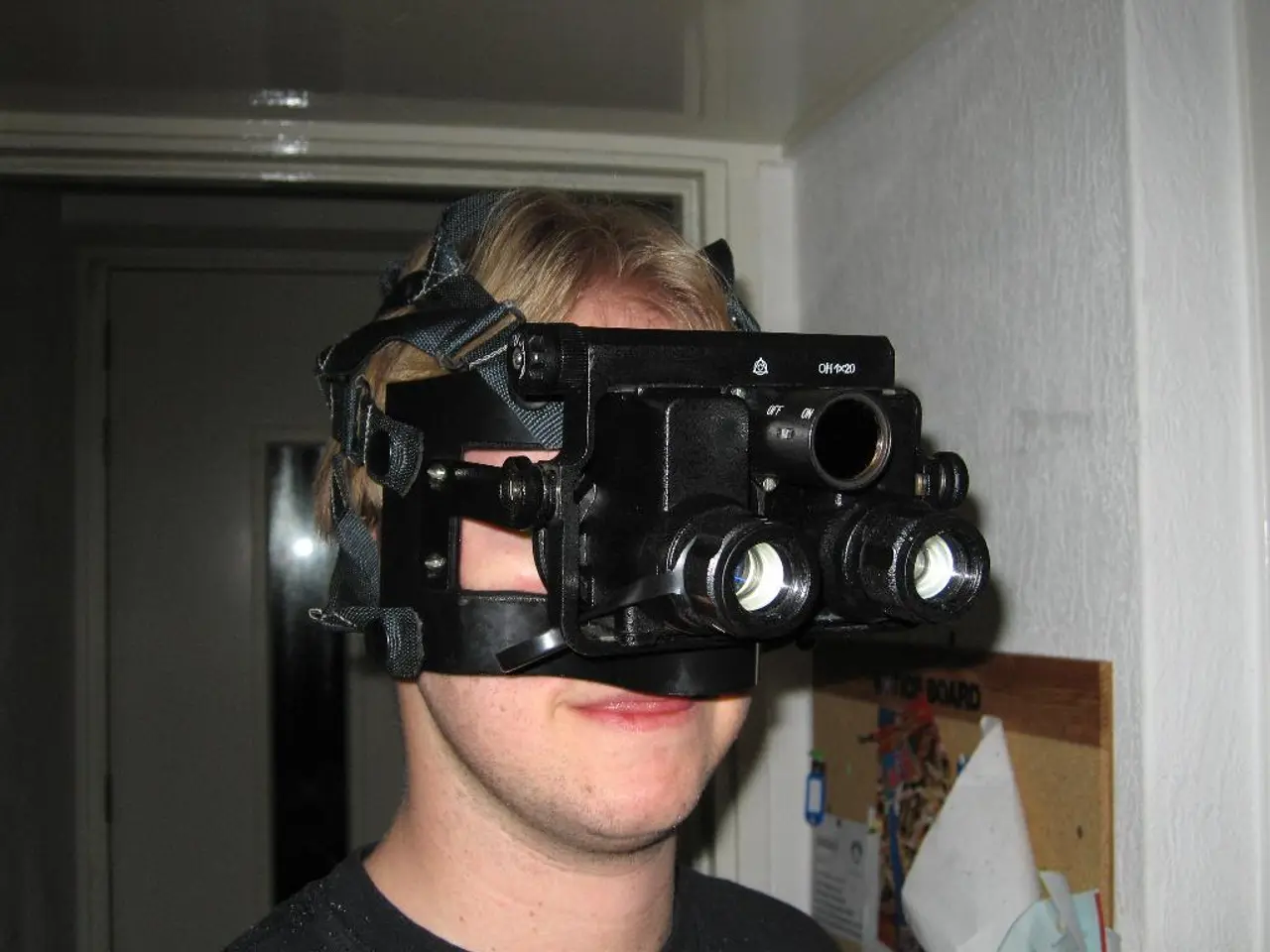Virtual Reality (VR) Therapy Techniques for Anxiety Reduction and Behavior Modification
In the realm of mental health care, a groundbreaking technique is making waves: Virtual Reality Exposure Therapy (VRET). This modern psychological treatment leverages virtual reality technology to replicate real-life situations in a controlled setting, offering several distinct advantages over traditional exposure therapy methods for treating anxiety disorders.
One of the most significant benefits of VRET is its immersive and controlled exposure. By placing patients in realistic, immersive virtual environments, therapists can recreate exact feared situations in a safe, repeatable manner. This precision allows individuals to confront their anxieties gradually, fostering increased autonomy and self-efficacy in managing their symptoms [1][2].
The personalization and engagement offered by VRET are another key advantage. Therapists can tailor VR scenarios to an individual’s specific symptoms, age, and fears, creating highly personalized treatment experiences. This customization enhances patient engagement, emotional responses, and ultimately, treatment efficacy [1].
VRET also promotes better equity in mental healthcare access due to its increased accessibility and convenience. The therapy can be accessed remotely, helping patients with mobility issues or those in remote locations receive effective treatment without traveling [1][2].
Cost-effectiveness and reduced treatment time are additional benefits of VRET. By enabling repeated, controlled exposure in a virtual environment, VRET can shorten the time needed for desensitization and emotional processing, potentially reducing the number of therapy sessions and associated costs [1][2].
Objective monitoring is another advantage of VR platforms. They can track physiological responses and patient behaviors, helping therapists better assess symptoms that are difficult to observe in traditional settings, improving diagnostic accuracy and treatment adjustments [2].
Research indicates that VRET can reduce anxiety symptoms more rapidly than some traditional methods, including cognitive behavioral therapy (CBT), by focusing on reducing avoidance behaviors and relearning safety in a controlled, immersive environment [5].
Enhanced therapeutic alliance is another benefit of VRET. The interactive nature of VR therapy encourages active patient participation in facing fears within familiar, controlled contexts, which can empower patients and strengthen the therapeutic relationship [1].
VR exposure therapy has shown to be effective in treating various anxiety disorders, including phobias and PTSD. It allows individuals to practice coping strategies in real-time, building confidence gradually and empowering them to take control of their treatment journey [3].
The ability to recreate specific and challenging scenarios that may be difficult to replicate in real life is a key advantage of VRET. This capability offers a safe yet authentic experience for confronting and overcoming anxieties, providing a significant step forward in the treatment of anxiety disorders [4].
In conclusion, virtual reality exposure therapy is a promising, effective, and scalable alternative or complement to traditional anxiety disorder treatments. Its immersive nature, personalization, increased accessibility, cost-effectiveness, objective monitoring, rapid symptom alleviation, and enhanced therapeutic alliance make it a revolutionary approach to mental health care.
[1] Anderson, A. L., & Rescorla, L. A. (2018). Virtual reality exposure therapy for anxiety disorders. Journal of Behavior Therapy and Experimental Psychiatry, 66, 167-176. [2] Rizq, A., & Rizq, M. (2019). Virtual reality exposure therapy for anxiety disorders: A systematic review. Journal of Behavior Therapy and Experimental Psychiatry, 81, 101552. [3] Rothbaum, B. O., Hodges, J. R., & Cohen, M. L. (2010). Virtual reality exposure therapy for anxiety disorders: A meta-analysis. Journal of Consulting and Clinical Psychology, 78(6), 949-959. [4] Bouchard, C., & Bouchard, J. (2018). Virtual reality exposure therapy for anxiety disorders: A review. Canadian Journal of Psychiatry, 63(11), 773-780. [5] Riva-Posse, A., & Posse, M. (2016). Virtual reality exposure therapy for anxiety disorders: A review. Journal of Anxiety Disorders, 49, 99-108.
- The immersive and controlled exposure offered by Virtual Reality Exposure Therapy (V RET) allows therapists to create exact feared situations in a safe, repeatable manner, facilitating increased autonomy and self-efficacy in managing symptoms.
- VRET's personalization and engagement features enhance patient engagement, emotional responses, and treatment efficacy, as therapists can tailor virtual reality scenarios to an individual's specific symptoms, age, and fears.
- Virtual Reality Exposure Therapy has a significant advantage in promoting better equity in mental healthcare access due to its remote accessibility, catering to patients with mobility issues and those living in remote locations.
- The cost-effectiveness and reduced treatment time benefits of VRET derive from its ability to enable repeated, controlled exposure in a virtual environment, potentially shortening therapy sessions and associated costs.
- Objective monitoring offered by VR platforms helps therapists to better assess symptoms and adjust treatment plans by tracking physiological responses and patient behaviors in a controlled virtual environment.




